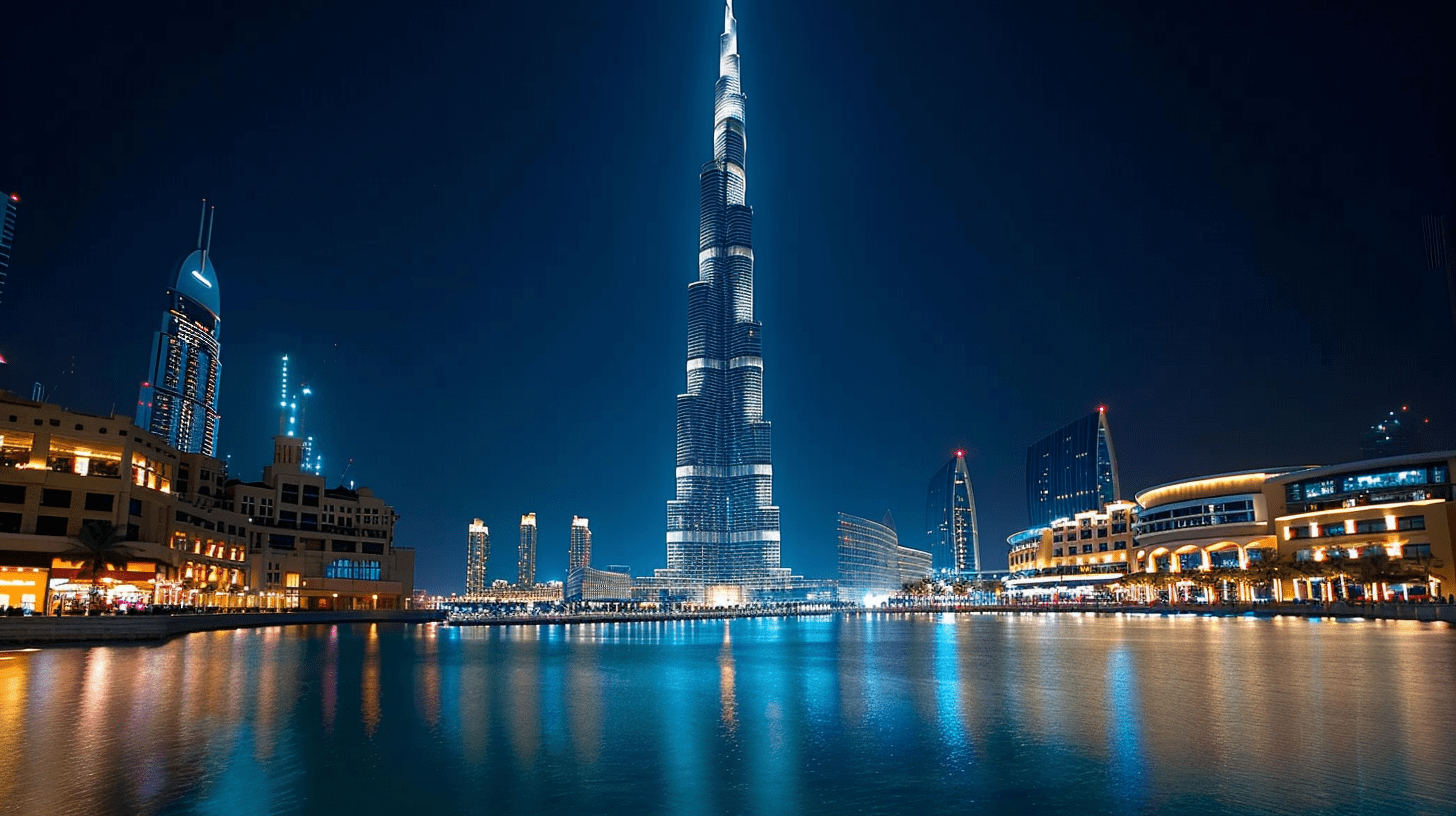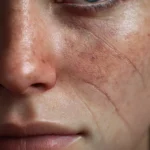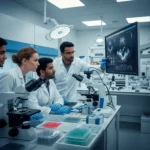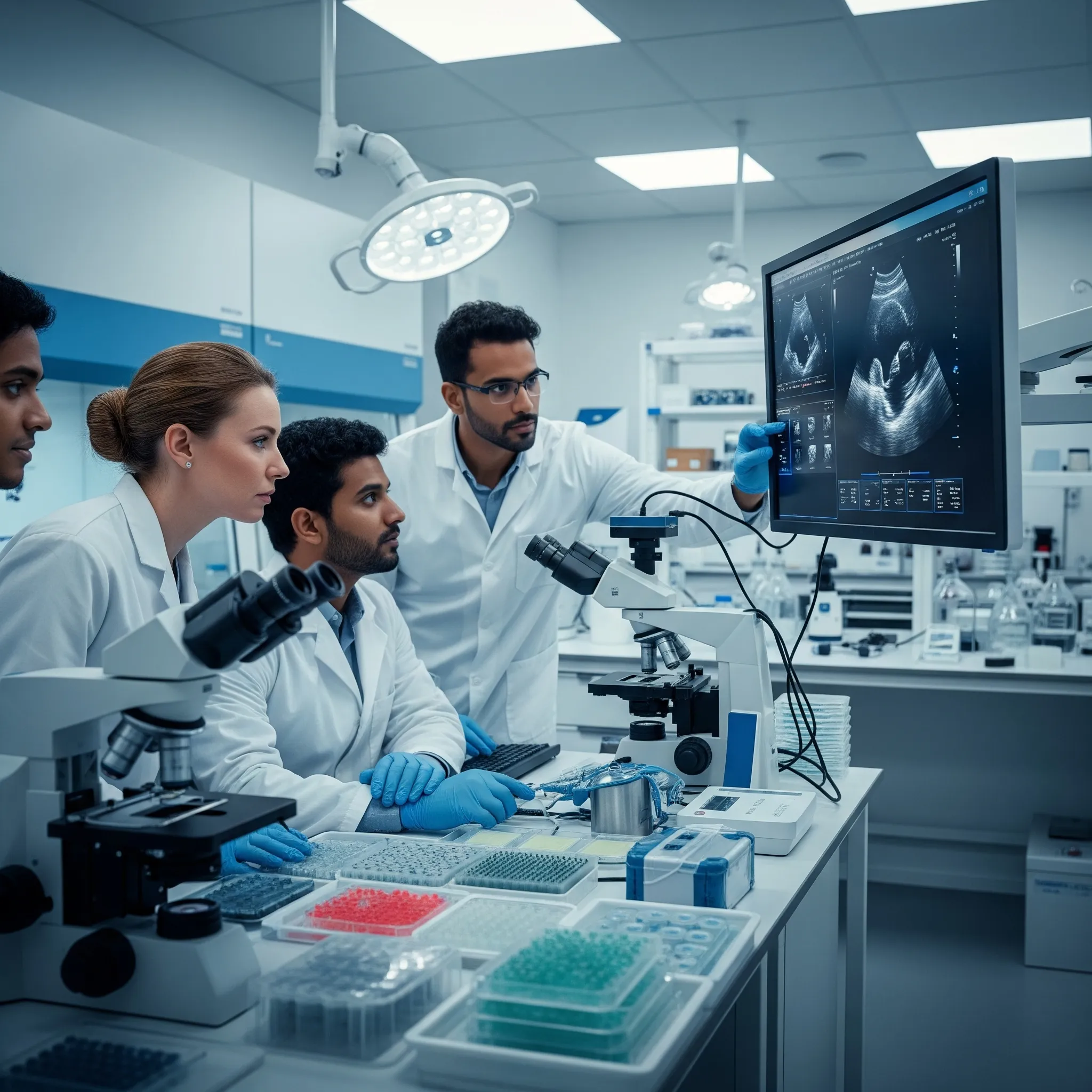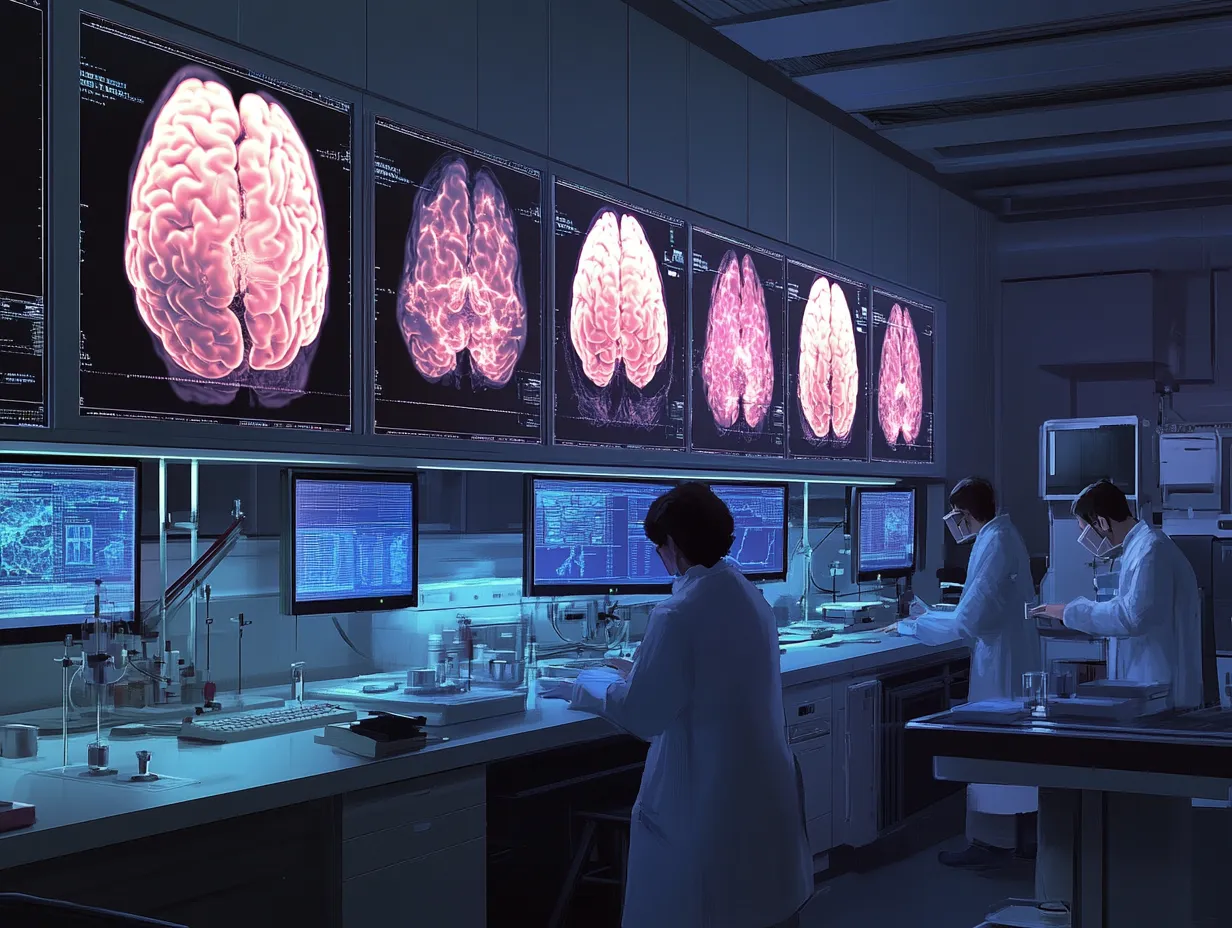What are the best countries for Stem Cell Therapy? Stem cell therapy is available worldwide, but not all countries follow the same standards. Some offer treatments just for Orthopaedic injuries, others can treat most things, you’ll start to hear all about whether or not we should expand cells or not!
So what are the best countries to get Stem Cell Treatment in 2025? We’ve broken it down for you here!
If you’re thinking about getting Stem Cell treatment, set up a conversation with our team here. Our team can guide you in deciding if it’s the right fit, help you choose the best clinic & region, and even assist you in securing some great discounts!
Top 5 Most Popular (or Best) Countries for Stem Cell Therapy
Right now, Mexico, Colombia, Thailand, India & Panama are the most popular or well known destinations for Stem Cell Treatment (Best is purely subjective here). Not to say other regions aren’t as good, as we’ll explain! Here’s more about them:
Mexico
Regulations
- Mexico has loose regulations, allowing many clinics to offer stem cell therapy with minimal government oversight.
- Unlike the U.S. or Canada, clinics can legally offer expanded stem cell treatments, but quality and safety vary significantly.
Allowed Treatments:
- Hematopoietic Stem Cell Transplants (HSCT): Approved for blood-related conditions like leukemia and lymphoma.
- Cultured or Expanded Stem Cells: Many clinics offer lab-grown (expanded) mesenchymal stem cells (MSCs) to increase the number of cells per treatment.
- Clinics in Mexico can legally offer umbilical cord-derived MSC treatments
Prohibited Treatments:
Embryonic stem cells: Clinics aren’t permitted to use Embryonic Stem Cells
Risks of get Stem Cell Treatment in Mexico:
- Lax Regulations & Cell Quality – No strict oversight means some clinics use low-quality or unverified stem cells.
- Shady Marketing – Many clinics use influencer testimonials or “celebrity” reviews that aren’t always real.
- Unverified Cell Sources – Some clinics don’t disclose where their stem cells come from or how they’re processed.
- Overpromising Results – If a clinic guarantees a cure, it’s a red flag.
- Limited Legal Protection – If something goes wrong, there’s little recourse compared to stricter-regulated countries.
Colombia
Regulations:
- No Central Medical Authority for Stem Cell Therapy – Unlike the U.S. (FDA) or Europe (EMA), Colombia doesn’t have a dedicated regulatory body overseeing stem cell treatments. Clinics operate under broader healthcare laws, but there’s no strict government enforcement specific to stem cells.
- Limited Oversight – Clinics have a lot of freedom in how they operate, which means quality can vary significantly. Some follow international standards, while others may not.
Limitations:
- Clinic Standards Differ – Some clinics follow strict protocols and Good Manufacturing Practices (GMP), while others may not. There’s no official certification to verify quality Which is why we’ve selected the best clinics in Colombia for you!
Allowed Treatments:
- Stem Cell Clinics Can Offer Treatments for Nearly Any Condition – There are no laws restricting the types of conditions clinics can treat. Patients come for everything from orthopedic injuries and neurological disorders to autoimmune diseases and cosmetic procedures.
- Both Autologous and Donor Stem Cells Are Used – Clinics can use your own (autologous) stem cells or donor (allogeneic) stem cells – like stem cells from umbilical cord.
- Expanded Stem Cells Are Legal – Unlike the U.S., Colombia allows clinics to culture and expand stem cells in a lab, meaning they can inject much higher doses.
Prohibited Treatments:
- Embryonic Stem Cells Are Banned – Colombia doesn’t allow clinics to use embryonic stem cells (ESCs) for treatments.
Risks:
- Lack of Clear Regulations – No strict oversight means clinic standards vary, and safety isn’t always guaranteed.
- Exosomes Instead of Stem Cells – Some clinics market exosome therapy as stem cell treatment, even though exosomes are cell byproducts, not actual stem cells.
- Variable Cell Quality – Without strong regulations, there’s no uniform standard for how stem cells are sourced or processed.
To learn more about Stem Cell Therapy in Colombia, we’ve put together a detailed article here, covering costs, legal regulations and some of the top clinics in the country!
Thailand
Regulations:
- Thailand’s FDA regulates Stem Cell Treatments.
Limitations:
- Standards Not as Rigorous: Compared to the US or Europe, standards are less stringent.
Allowed Treatments:
- Hematopoietic Stem Cell Transplants (HSCT): For blood-related conditions, using blood-forming stem cells.
- Minimal Manipulation. Stem cells can be used with minimal processing.
- Cultured or Expanded Stem Cells: Allowed, providing a higher number of stem cells for treatment.
Prohibited Treatments:
- Non-Homologous Use. Treatments without proper oversight and regulation are prohibited.
Risks:
- Regulation Confusion & Doctor Disputes – Thailand’s Medical Council warned that using stem cells for anything beyond blood and eye diseases might be illegal, but some clinics still offer treatments for a wide range of conditions. A group of doctors is now suing the council, arguing that these warnings misled patients and hurt their reputations.
- Overhyped Marketing – Some clinics promote stem cell therapy as a miracle cure, making big claims that aren’t always backed by solid research. ( No stem cell treatment is 100% guaranteed!)
- Stem Cell Quality Concerns – Not all clinics in Thailand are upfront about where their stem cells come from or how they’re processed. Some use cells with questionable viability, which could make treatments less effective or even risky. That’s why we’ve gone through & found the best Clinics in Thailand for you already!
Thinking about getting stem cell therapy in Thailand? We break down everything you need to know, from regulations to costs, in this guide.
India
Regulations:
- The Indian Council of Medical Research (ICMR) provides guidelines for Stem Cell Therapy.
Limitations:
- Inconsistent Enforcement: Regulatory practices can vary across regions.
Allowed Treatments:
- Hematopoietic Stem Cell Transplants (HSCT): For blood disorders, using blood-forming stem cells.
- Minimal Manipulation. Stem cells can be used with minimal processing.
Prohibited Treatments:
- Unauthorized Stem Cell Growth: Unauthorized lab growth is prohibited.
- Non-Homologous Uses: Treatments using stem cells for non-original purposes without regulation are prohibited.
Risks in India:
- Loose Regulations – While India has guidelines for stem cell use, enforcement is weak, allowing some clinics to operate with little oversight.
- Lack of Standardized Cell Processing – Unlike tightly regulated countries, India does not have uniform protocols for stem cell quality, increasing the risk of ineffective or contaminated treatments.
- Clinics Operating in a Legal Grey Area – Many private clinics offer experimental treatments without clear regulatory approval, making it hard to verify safety and effectiveness.
India’s one of the most affordable places for stem cell therapy. Want to know why? We go into detail here.
Panama
Regulations:
- Flexible Regulatory Framework: Panama allows a wide range of stem cell treatments with less oversight compared to the U.S., Europe, or Japan.
- No Centralized Regulatory Body: Unlike the FDA (U.S.) or EMA (Europe), Panama does not have a strict government entity monitoring stem cell therapy.
- Clinics Set Their Own Standards: Some follow international safety guidelines (GMP-certified labs, rigorous testing), while others operate with minimal oversight.
Limitations & Considerations:
- Varied Clinic Standards: Some clinics maintain high safety protocols, but no unified national regulation guarantees consistency.
- No Mandatory Clinical Trials: Many treatments offered in Panama would still be considered experimental in other countries.
Allowed Treatments:
- Any Stem Cell Type: Both autologous (from the patient) and allogeneic (donor-derived) cells, including umbilical cord-derived mesenchymal stem cells (MSCs).
- Stem Cell Culturing & Expansion: Unlike the U.S., Panama allows lab expansion and manipulation, enabling higher cell counts in treatments.
- Broad Treatment Scope: Clinics offer therapy for neurological disorders, autoimmune diseases, orthopedic injuries, and anti-aging applications.
Prohibited Or Unregulated Areas:
- No Universal Standards for Cell Processing: There is no uniform regulation dictating lab practices for cell purification, culturing, or injection procedures.
- No Clear Restrictions on Non-Homologous Use: Clinics can use stem cells for treatments beyond their original intent (e.g., anti-aging, wellness), but this is not actively regulated.
- Oversight of Expanded Stem Cells is Unclear: While expansion is allowed, there’s no strict enforcement of safety protocols across all clinics
To read more about Stem Cell treatment in Panama, we’ve got a whole article dedicated to the region here!
Treatment costs vary widely depending on the country, type of treatment, and clinic. These 5 destinations are probably the cheapest around, here’s a rough breakdown. (But remember, cheaper doesn’t always mean better!)
The cost of stem cell therapy depends on where you go and what you need. We’ll help you find safe, verified clinics at the right price. Without the guesswork.
Get Free GuidanceNo pressure. No spam. Just honest advice to help choose the right clinic.
| Country | Average Costs | Key Advantages | Regulatory Notes |
| Mexico | $2,500 – $20,000 | Affordable treatments, widely available clinics, minimal travel for U.S. patients | Loose regulations – Some clinics operate without strict oversight, quality varies. |
| Panama | $5,000 – $30,000 | Uses high-dose, lab-expanded MSCs, popular for neurological and autoimmune conditions | Legally allows expanded stem cells, but no strict regulatory oversight. |
| Thailand | $5,000 – $15,000 | Strong medical tourism infrastructure, uses high-dose, lab-expanded MSCs | Loose Regulations |
| Colombia | $5,000 – $25,000 | Offers expanded stem cell therapy, good medical tourism support | Loose regulations |
| India | $3,500 – $10,000 | Strong Medical Tourism Infrastructure | Loose Regulations |
Want a full breakdown of costs across different countries? Check out our guide on What is the Average Cost of Stem Cell Therapy to compare prices and see what you can expect to pay.
Best 3 Emerging Countries in 2025 for Stem Cell Therapy
Japan & UAE are definitely emerging as amazing countries for medical tourists thinking about Stem Cell Therapy. Both are regulated, have amazing research & facilities. They should 100% be on your radar!
Japan
Regulations:
- Japan has some of the strictest rules for stem cell therapies, thanks to the 2014 Act on the Safety of Regenerative Medicine (ASRM). The Pharmaceuticals and Medical Devices Agency (PMDA) oversees everything to make sure treatments are safe, effective, and done by the book. All therapies must happen in authorized clinics and follow strict guidelines.
Limitations:
- Getting stem cell treatment in Japan takes a bit of commitment. You’ll need multiple visits. The first to collect adipose-derived stem cells (taken from your fat tissue), and the second (4–6 weeks later) to receive the cultured cells after they’ve been carefully processed in a certified lab.
Allowed Treatments:
- Hematopoietic Stem Cell Transplants (HSCT): Approved for treating blood diseases and cancers using blood-forming stem cells.
- Cultured Adipose-Derived Stem Cells: Allowed for specific treatments like knee osteoarthritis and anti-aging therapies. Each therapy needs individual approval and must follow Japan’s strict safety standards.
Prohibited Treatments:
- Clinics cannot offer umbilical cord-derived MSCs (UC-MSCs) for joint treatments or other conditions unless they’re part of an approved clinical trial.
- Growing or expanding stem cells without proper authorization is strictly off-limits.
Japan has some of the most advanced stem cell treatments in the world. See what’s allowed and what’s not in our guide.
South Korea
Regulations:
- Under the Regenerative Bio Act which came into play in 2025, South Korea now has similar laws to Japan
- Only approved Regenerative Medicine Facilities can legally perform Stem Cell Treatments for experimental therapies.
Allowed Treatments:
- Approved Clinics can culture & grow autologous cells & offer treatments for a wide variety of conditions
Prohibited Treatments:
- Unapproved clinics can’t culture cells in a lab or provide Umbilical cord derived Stem Cell Treatments
South Korea is now aiming to be one of the world leaders in Stem Cell Research & treatments. They have the only approved Umbilical Cord Derived Stem Cell Treatment for Knee Osteoarthritis globally! Read the full country guide to learn more.
United Arab Emirates (UAE)
Regulations:
- The UAE’s Ministry of Health and Prevention (MOHAP) and Dubai Health Authority (DHA) regulate stem cell therapies to ensure safety and innovation.
- Facilities like the Abu Dhabi Stem Cells Center (ADSCC) lead the region in advanced regenerative medicine.
Limitations:
- Non-Homologous Use: Any treatments beyond a stem cell’s natural function require explicit regulatory approval.
- Strict Regulatory Oversight: Only licensed facilities with MOHAP or DHA approval can provide therapies.
Allowed Treatments:
- Cosmetic and Orthopedic Applications: Regulated therapies for skin rejuvenation and cartilage repair are increasingly available.
- Hematopoietic Stem Cell Transplants (HSCT): Approved for treating blood-related conditions.
- Minimal Manipulation: Basic isolation and concentration of stem cells for therapeutic use.
- Cultured or Expanded Stem Cells: Permitted in licensed facilities adhering to GMP standards and receiving regulatory authorization.
Prohibited Treatments:
- Non-Approved Uses of Cultured Cells: While cultured cells are allowed, using them for unauthorized experimental applications is prohibited.
- Unlicensed Stem Cell Treatments: Clinics must have explicit authorization to offer any stem cell-based procedures.
UAE is positioning itself as a stem cell hub, but how does it compare? We break down Dubai specifically here.
Not sure which country’s right for you?
Browse verified stem cell clinics in Colombia, UAE and more that we’ve already personally vetted.
Browse Verified Stem Cell ClinicsOther Countries Offering Stem Cell Therapy
Here’s the low down on how other countries are looking at Stem Cell Treatments right now.
United States
Regulations:
- The FDA (Food and Drug Administration) strictly controls Stem Cell Therapies.
- Clinical trials are required to ensure safety and efficacy.
Limitations:
- No Lab Expansion: Clinics generally cannot grow (expand) Stem Cells in the lab, which limits the number of Stem Cells available for treatment. Exceptions exist under specific, FDA-approved protocols.
- Only Homologous Use: Clinic’s must use stem cells for their original purpose, known as “homologous use” (e.g., using blood-forming stem cells to treat blood diseases).
Allowed Treatments:
- Hematopoietic Stem Cell Transplants (HSCT): For blood disorders like leukemia and lymphoma (using blood-forming stem cells to treat blood cancers).
- Minimal Manipulation. Clinics can use stem cells only when they haven’t significantly altered them (e.g., basic processing like washing and concentrating)
Prohibited Treatments:
Non-Homologous Use: Using stem cells for purposes other than their original intent without FDA approval is not allowed.
Cultured or Expanded Stem Cells: Unauthorized growth of stem cells in the lab is prohibited unless under specific FDA-approved protocols.
There have been some recent changes in the US, our article on Stem Cell Therapy in America covers them in more detail.
Canada
Regulations:
- Health Canada have strict regulations around Stem Cell Therapy in Canada.
Allowed Treatments:
- Prochymal: an allogeneic mesenchymal stem cell product approved for treating acute graft-versus-host disease (GvHD) in children.
- Kymriah and Yescarta: CAR-T cell therapies for specific cancers (though technically not stem cells, they’re cited as cell-based therapy precedents).
- Minimally manipulated hematopoietic stem cell transplants for blood disorders & immune deficiencies.
Prohibited Treatments:
- Any Stem Cell Treatment for any condition not mentioned above
United Kingdom
Regulations:
- Regulated by the MHRA (Medicines and Healthcare products Regulatory Agency), which oversees stem cell therapies in accordance with UK-specific laws. Post-Brexit, UK regulations align closely with EMA (European Medicines Agency) standards but operate independently.
- Lab Expansion Allowed (With Authorization): Clinics can grow and culture stem cells in the lab, but this must be done in licensed facilities following Good Manufacturing Practice (GMP) standards and with MHRA approval.
Limitations:
- Stem cells that are significantly processed (e.g., grown or cultured in a lab) or used for non-homologous purposes (i.e., purposes different from their natural function) must be classified as an Advanced Therapy Medicinal Product (ATMP). This requires strict MHRA approval to ensure the treatment meets safety, quality, and efficacy standards
Allowed Treatments:
- Hematopoietic Stem Cell Transplants (HSCT): Approved for treating blood disorders and cancers (e.g., leukemia, lymphoma) using blood-forming stem cells. These are often provided by the NHS or private clinics
- Minimal Manipulation: Stem Cells can be used if they are not significantly altered (e.g., simple isolation, separation, and re-injection). Examples include:
Autologous mesenchymal stem cells (MSCs) for orthopedic conditions like joint repair. - Cultured or Expanded MSCs (With MHRA Authorization):
Clinics with MHRA authorization can legally grow and process MSCs in a lab (e.g., for culturing or expanding cell quantities) to use in treatments such as orthopedic injuries. This requires compliance with strict Advanced Therapy Medicinal Product (ATMP) regulations, including the use of licensed GMP-compliant facilities.
Prohibited Treatments:
- Non-Homologous Use: Stem Cells cannot be used for purposes that differ from their natural role (e.g., using mesenchymal stem cells to treat neurological conditions like autism) without MHRA approval.
- Cultured or Expanded Stem Cells: Growing or expanding Stem Cells in a lab without MHRA authorization is prohibited. Such treatments must be classified as ATMPs and meet strict regulatory requirements.
Stem cell therapy in the UK comes with tight regulations. Here’s what you need to know before considering treatment here.
Stem Cell Therapy in Germany is a bit trickier, we’ve broken it down a little differently to simplify it!
Regulations:
- Germany’s Paul Ehrlich Institute (PEI) strictly regulates Stem Cell treatments.
Allowed Treatments:
- Hematopoietic Stem Cell Transplants (HSCT) – Fully approved for treating blood disorders, leukemia, and lymphoma using blood-forming stem cells.
- Clinics can take a patient’s own stem cells from bone marrow or fat and inject them into joints to treat Orthopaedic and Joint Injuries ONLY.
- Stem Cell Therapies for Eye Diseases – Treatments like Holoclar (for corneal repair) are approved as ATMPs. (Advanced Therapy Medicinal Product)
- Gene-Edited Stem Cells for Rare Genetic Disorders – Some treatments, like Strimvelis (ADA-SCID therapy), are allowed under ATMP classification.
Prohibited Treatments:
- Unapproved Lab-Grown Stem Cells: Most Clinics cannot grow or expand stem cells for therapeutic use – meaning the amount of cells you get per treatment are a lot lower.
- Non-Homologous Use: Clinics in Germany can’t legally use autologous stem cells for neurological diseases, anti-aging, or other systemic conditions unless they get special approval
- Germany does NOT allow private clinics to offer umbilical cord-derived MSC therapies.
Exceptions:
- If a clinic is approved by the PEI, they can use cultured and expanded stem cells – but there’s not many of these clinics around.
- Compliance with GMP Standards – Any cultured or expanded stem cells must be processed in a Good Manufacturing Practice (GMP)-compliant facility.
Stem Cell Treatments in France
Regulations:
- The ANSM (French National Agency for the Safety of Medicines and Health Products) oversees stem cell treatments, making sure they align with both national and EU laws.
Allowed Treatments:
- Hematopoietic Stem Cell Transplants (HSCT): Approved for blood-related conditions like leukemia.
- Minimally Manipulated Autologous Stem Cells: Using a patient’s own stem cells from bone marrow or fat for orthopedic issues, such as joint injuries, is permitted.
- Authorized Advanced Therapies: Certain treatments, like Holoclar for corneal damage, have received approval under the Advanced Therapy Medicinal Products (ATMP) framework..
Prohibited Treatments:
- Unapproved Lab-Expanded Stem Cells: Most Clinics aren’t allowed to use cultured or expanded stem cells
- Non-Homologous Use: Applying stem cells for purposes other than their original intent, like for neurological diseases or anti-aging treatments, is forbidden without proper approval.
Exceptions
- If a clinic has ATM Approval, they can use cultured and expanded stem cells – but there’s not many of these clinics around.
Australia
Regulations:
- The Therapeutic Goods Administration (TGA) regulates all stem cell therapies under strict guidelines.
Allowed Treatments:
- Hematopoietic Stem Cell Transplants (HSCT) – Fully approved for treating blood disorders, leukemia, and lymphoma using blood-forming stem cells.
- Orthopedic & Joint Treatments – Clinics can legally use autologous (self-derived) stem cells taken from a patient’s own bone marrow or fat for conditions like arthritis, joint injuries, and tendon damage – but they can’t grow these cells in the lab. So, dosage for your treatments will be low.
- Clinical Trials & ATMPs – Some hospitals and research centers offer experimental stem cell treatments for conditions like spinal cord injuries, MS, and neurological diseases, but these are strictly controlled and only available within approved clinical trials.
Prohibited Treatments:
- Expanded or Cultured Stem Cells – Clinics cannot legally grow, multiply, or modify stem cells in a lab for therapeutic use unless they have TGA approval as an ATMP (Advanced Therapy Medicinal Product). Not many do!
- Umbilical cord-derived stem cells (UC-MSCs) are NOT legally available in private clinics for commercial treatment.
- Anti-aging and systemic stem cell treatments are NOT legally offered in private clinics outside of research settings.
Government Investment in Research:
Australia is investing $34.5 million in cutting-edge stem cell research, including $7 million for Magellan Stem Cells to conduct large-scale clinical trials on donor stem cells for knee osteoarthritis. With one in five Australians over 45 affected by this condition, these trials could provide groundbreaking alternatives to knee replacement surgery.
By combining strict regulations with innovative research, Australia is advancing stem cell therapies to improve patient outcomes and lead the way in regenerative medicine.
To read more about treatment in Australia specifically, check out our article on Stem Cell Therapy in Australia!
Stem Cell Therapy In Taiwan
Regulations:
– Stem cell therapies in Taiwan are supervised by the Regenerative Medicine Dual Acts: the Regenerative Medicine Act and the Regenerative Medicine Product Regulations, overseen by the Ministry of Health and Welfare (MOHW) and the Regenerative Medicine Review Committee
Limitations:
– Strict Regulatory Framework: While the regulatory environment promotes safety, the stringent approval process may limit access to certain therapies compared to countries with more flexible systems.
– Limited Availability Outside Urban Centers: Access to advanced clinics offering stem cell therapy may be limited to major cities like Taipei, reducing options for patients in rural areas.
Allowed Treatments:
Anti-Aging Therapies: Available through authorized clinics, provided they comply with MOHW safety and efficacy standards.
Hematopoietic Stem Cell Transplants (HSCT): Widely approved for treating blood-related conditions like leukemia and lymphoma.
Cultured or Expanded Stem Cells: Approved for orthopedic conditions like osteoarthritis and tendon injuries, with treatments conducted in GMP-compliant labs.
Prohibited Treatments:
Unauthorized Experimental Therapies: Clinics cannot offer unapproved treatments for experimental conditions like neurological disorders, autism, Alzheimer’s, or spinal cord injuries unless part of a clinical trial.
Unauthorized Culturing or Expansion: Clinics cannot expand or manipulate stem cells without explicit MOHW approval.
Embryonic Stem Cell Use: The use of embryonic stem cells is restricted, and creating embryos for research purposes is not allowed.
Government Investment
Taiwan is making big strides in stem cell research, thanks to major government investments and clear regulations. In 2024, the country passed groundbreaking laws to set high safety and quality standards while also boosting funding for cutting-edge treatments.
The government has poured resources into clinical trials for conditions like spinal cord injuries and neurodegenerative diseases. By partnering with top universities and biotech companies, Taiwan is pushing the boundaries of what’s possible in regenerative medicine.
With its advanced labs and support for innovation, Taiwan is quickly becoming a global leader in stem cell therapy, attracting researchers and patients alike. It’s an exciting time for the future of medical treatments here!
But, what is Stem Cell Therapy?
Stem Cell Therapy is a medical treatment that uses stem cells—the body’s master cells capable of developing into various specialized cell types or sending signals to stimulate the healing process—to repair, replace, or regenerate damaged tissues. These therapies harness the natural healing potential of the body to address a wide range of conditions.
Not sure how stem cell therapy actually works? We explain the science behind it in this guide.
Navigating Stem Cell Therapy Abroad: Travel Considerations
Traveling for Stem Cell Therapy requires careful planning to ensure a smooth experience. Here’s a quick guide to the essentials:
- Entry and Documentation: Check visa requirements and ensure you have all necessary paperwork, including any medical travel approvals.
- Travel Insurance: Get medical travel insurance that covers complications, trip delays, and medical evacuation if needed.
- Accommodation: Stay close to the clinic to make recovery easier.
- Post-Treatment Recovery: Know how long you’ll need to stay before flying home.
- Understand the Costs and Payment Structure:
Transparent Pricing: Get a detailed breakdown of the costs involved, including treatment, travel, accommodation, and aftercare
Hidden Costs: Be wary of additional fees for consultations, testing, or follow-up appointments.
So, what is the best country for Stem Cell Therapy?
The best country for stem cell therapy depends on three things: how far you’re willing to travel, whether you want a higher cell dose, and what you can afford. Some places allow expanded stem cells, while others have strict rules. If you need help finding the right clinic, reach out, we’ve done all the leg work already! But here’s a quick summary for you:
Developing countries like Colombia, Thailand, and Mexico: These countries provide more accessible and varied treatments, including the ability to grow (expand) stem cells in labs. This allows them to offer a much higher number of stem cells than those in the US, Canada, and Europe, potentially making treatments more effective for certain conditions. However, these countries also come with varying degrees of oversight and potential risks.
US, Canada, and parts of Europe: These regions have strict regulations that ensure safety but limit the availability and number of stem cells used in treatments. However, there are parts of Europe like the UK & Germany that are highly regulated but do allow higher amounts of Stem Cells for treatments.
Japan: Japan offers faster approvals while maintaining safety standards, allowing for innovative treatments within a regulated framework.
Alt Treatment is a free, independent platform that helps you understand stem cell therapy & decide if it’s right for you.
We break down complex information into clear, honest guidance. When you’re ready, we can connect you with verified clinics that meet your needs, in the right location & often with exclusive discounts.
There’s no charge to use our platform. No hidden fees. No pressure. Our main aim is to genuinely help you figure out if treatment is right & the best places to consider.
If you want to talk, fill out our form here & our personal concierge team will reach out.
In Mexico, prices range from $5,000 – $20,000, depending on what type of Stem Cell Treatment you’re getting. Reach out to us here if you want to grab some cool discounts or need a hand on your journey
Countries like Mexico, India, Panama, Thailand and Colombia offer the cheapest Stem Cell Treatments compared to the United States or Western Europe. But Japan’s prices aren’t too bad!
Want a full price breakdown by country? Check out our Complete Stem Cell Therapy Cost Guide for detailed comparisons.
Stem cell therapy can be safe when you pick the right clinic. Go with a clinic that uses safer cells like MSCs, keeps things super clean, and follows up with you after treatment. Sure, there are some risks, but with the right precautions, you can feel good about your safety.
Fill in your details below
For a discounted offer for Stem Cell Therapy!





